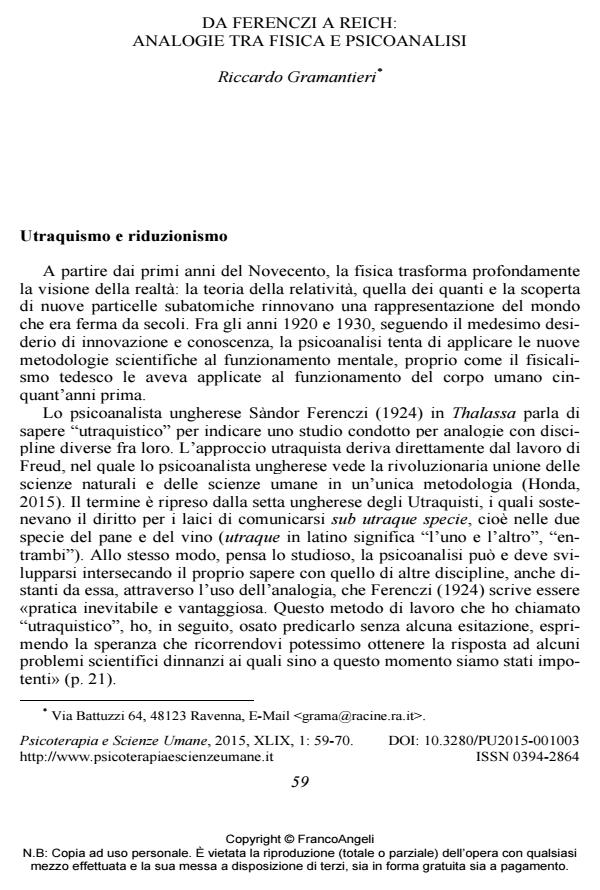Da Ferenczi a Reich: analogie tra fisica e psicoanalisi
Journal title PSICOTERAPIA E SCIENZE UMANE
Author/s Riccardo Gramantieri
Publishing Year 2015 Issue 2015/1
Language Italian Pages 12 P. 59-70 File size 119 KB
DOI 10.3280/PU2015-001003
DOI is like a bar code for intellectual property: to have more infomation
click here
Below, you can see the article first page
If you want to buy this article in PDF format, you can do it, following the instructions to buy download credits

FrancoAngeli is member of Publishers International Linking Association, Inc (PILA), a not-for-profit association which run the CrossRef service enabling links to and from online scholarly content.
During the 1920s and 1930s physics offers a different view of reality, and psychoanalysis attempts to apply new scientific methods to the study of mind. Sàndor Ferenczi called "utraquism" this similarity method used between disciplines, even very different ones. The application of thermodynamics’ laws in instinct theory is the most explored field of investigation. It was anticipated by Freud in the Wolf Man (1914 [1918]), and later C.G. Jung writes a paper that called the "Psychic energy" (1928), Bernfeld & Feitelberg (1930, 1931) try to prove the existence of the death instinct by the law of entropy, and finally Wilhelm Reich (1934-37, 1948) proposes a theory of energy that allows him to measure libido. All these attempts to apply the rules of physics to the unconscious were doomed to fail, but they pushed the psychoanalytic movement to discuss on the role of psychoanalysis among the sciences.
Keywords: Sàndor Ferenczi, Wilhelm Reich, instinct theory, reductionism, utraquism
- Re-emergence of the Death Instinct in Wilhelm Reich's Last Experiment Riccardo Gramantieri, in Psychoanalysis and History /2016 pp.203
DOI: 10.3366/pah.2016.0189
Riccardo Gramantieri, Da Ferenczi a Reich: analogie tra fisica e psicoanalisi in "PSICOTERAPIA E SCIENZE UMANE" 1/2015, pp 59-70, DOI: 10.3280/PU2015-001003